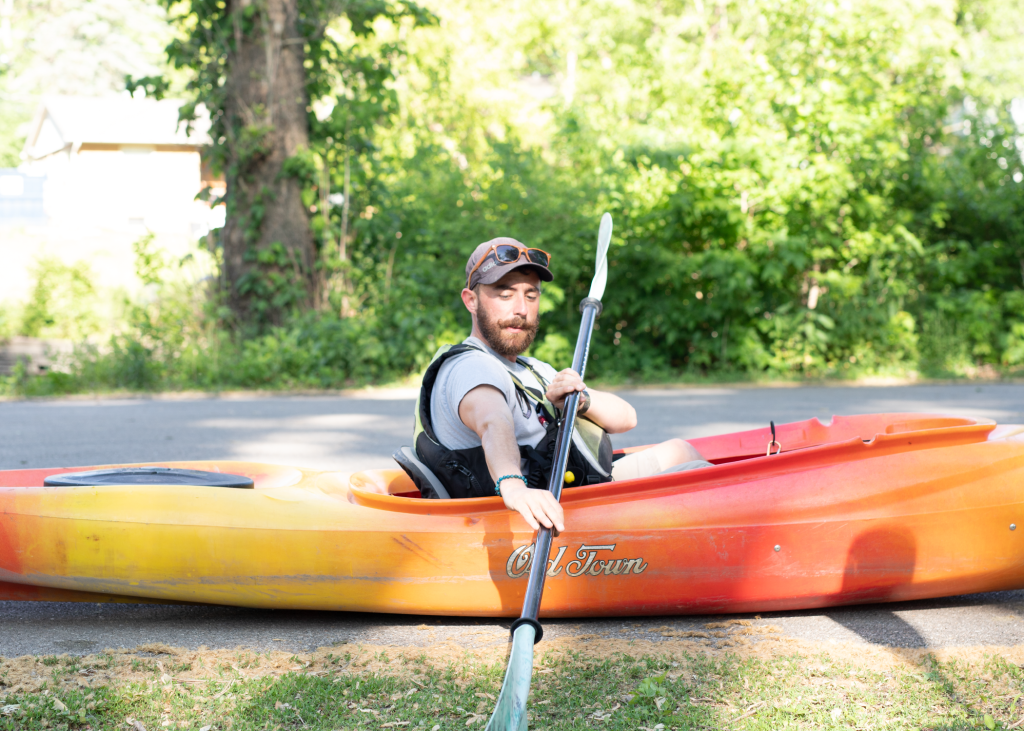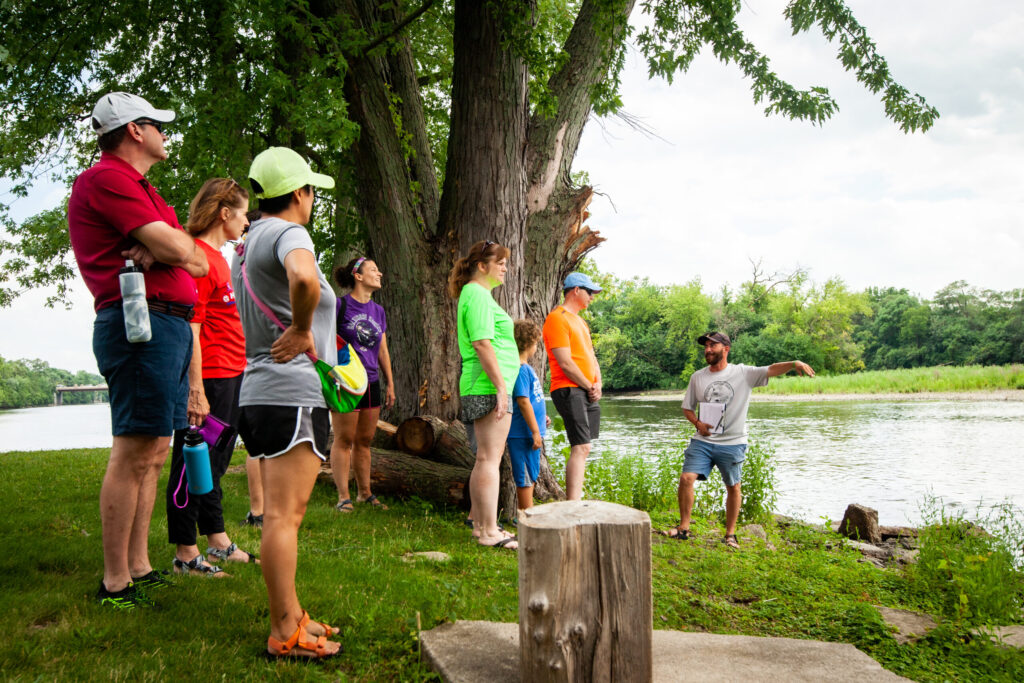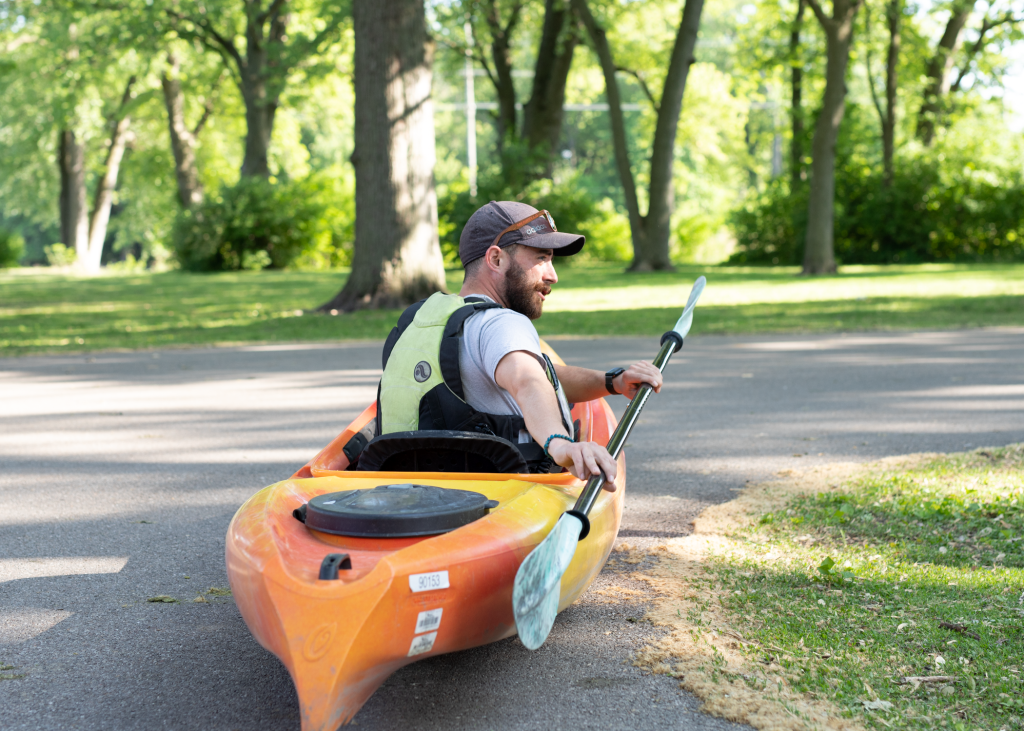Kayak safety lessons are essential for anyone looking to move beyond the illusion that paddling is just about floating downstream. These lessons build self-reliance, teach vital safety techniques, and help you develop true comfort and control on the water. While it’s tempting to jump right into the sport, proper instruction transforms your experience—making it safer, more enjoyable, and far more rewarding. With expert guidance, you reduce your risk of injury, improve paddling efficiency, and gain skills that would otherwise take years to learn through trial and error.
Too often, first-timers skip structured training and rely on trial-and-error. But what’s missing in that approach is confidence, safety awareness, and technique. In just 90 minutes, a professional kayaking class can dramatically change your comfort level on the water. It’s not just about being able to paddle forward—it’s about understanding current dynamics, balance, posture, and what to do if things go wrong. That’s why these lessons are structured for results, not just recreation.
Table of Contents
Professional Kayak Safety Lessons Instructors Make All the Difference
A great instructor is more than just someone who knows how to paddle. In a true kayaking lesson, you’re learning from someone with formal outdoor education, risk assessment skills, and a teaching method rooted in national safety standards. Instructors who hold certifications—especially from organizations like the American Canoe Association (ACA)—are trained in water rescue, skill progression, and how to tailor techniques to different body types, abilities, and comfort levels.
Certified instructors also know how to adapt to changing river conditions and teach students to respond with confidence. Their role goes beyond showing you how to use a paddle—they’re teaching mindset, alertness, and how to stay calm in unexpected situations. Without this level of expertise, learning kayaking can feel overwhelming. But with a strong instructor, you’re in a hands-on, supportive environment where growth happens faster—and safer.
You Can’t Put a Price on Water Safety
One of the most overlooked aspects of learning to kayak is understanding how to recognize and avoid danger on the water. Even in calm-looking environments, rivers and lakes carry real risks—currents, strainers, cold water, and weather changes can all turn a day of paddling into a dangerous situation. A high-quality beginner or river kayaking class teaches how to read water, recognize threats, and make smart decisions before and during a trip.
Basic rescue drills are also taught in these classes, from wet exits to assisted reentries, giving students the tools they need to recover if they capsize. These aren’t just bonus features—they’re life-saving skills. Learning how to calmly respond to emergencies can make all the difference between panic and control. For those who paddle with kids or in remote areas, these techniques can be essential. Safety isn’t a side topic—it’s the foundation of every quality paddling class.
Hands-On Learning That Sticks With You
Learning to kayak isn’t something that comes from watching YouTube videos alone. The tactile experience of getting in a boat, feeling your balance shift, and trying paddle strokes with real-time feedback is irreplaceable. Hands-on practice builds muscle memory and confidence, and that’s exactly how structured classes are taught. These lessons are interactive from the start, with drills that simulate real-world challenges in a controlled environment.
Students can immediately apply what they learn, correcting technique with expert input. For example, many beginners unknowingly paddle inefficiently, leading to fatigue and sore muscles. An instructor can spot that immediately and offer a correction that saves energy and improves control. This kind of feedback is impossible to get solo, and it’s what helps students improve far faster than trial and error.

Equipment Quality Impacts Learning
Believe it or not, the equipment used during your lesson makes a major difference in how quickly you learn. Beginner-friendly kayaks that are well-maintained, stable, and properly sized make paddling easier and safer. Low-end gear or worn-down boats can frustrate learners and even put them at risk. That’s why lessons that use high-quality equipment—like kayaks that retail for $899 and up—create better outcomes for students.
The same goes for paddles and personal flotation devices (PFDs). When you’re learning, you need equipment that responds well to input and fits properly. A good paddle helps with stroke efficiency and minimizes strain, while a properly fitted PFD ensures mobility and safety. In a structured class, all this gear is carefully chosen and prepped to help you succeed from the moment you get on the water.
Real Rescue Skills, Not Just Theories
Most recreational paddlers don’t think about rescue techniques—until they need them. But in a class that includes river kayaking or capsizing scenarios, students are taught how to perform deep water reentries, T-rescues, and self-rescue techniques. These aren’t abstract concepts—they’re practiced in the water under guidance, until students can perform them with confidence.
Even a basic understanding of rescue mechanics makes paddlers more confident and independent. Knowing how to help yourself or another paddler builds resilience, reduces panic, and creates a safer environment for everyone on the water. These classes don’t just check off a list of skills—they build a foundation that prepares you for the real-life demands of paddlesport adventures.

Confidence Is a Skill You Can Build
One of the most immediate benefits of professional kayaking lessons is how quickly they build confidence. Students who start off nervous or unsure often leave the class feeling empowered, ready to paddle independently or explore further. This transformation comes from structured progressions: starting with balance, then introducing control, and finally adding speed and direction changes.
Confidence isn’t something that magically appears—it’s a product of knowledge and successful repetition. In these classes, each success builds on the last, and that momentum helps students push past fear or hesitation. Whether you’re working toward a longer paddle trip, a multi-day expedition, or just want to enjoy the river more safely, confidence is the bridge between wanting and doing.
The Class Structure Supports All Learning Styles
Not everyone learns the same way—and the best kayaking lessons are designed with that in mind. Whether you’re a visual learner, someone who needs repetition, or someone who learns by doing, these classes are taught to accommodate a wide range of styles. Instructors use demonstrations, verbal explanations, one-on-one coaching, and even mini-challenges to reinforce concepts.
This approach ensures no one is left behind. Some students may need a few tries to master a wet exit; others may pick it up quickly and be ready for more advanced drills. Either way, the structure of the class is built to flex with your pace while keeping safety as the top priority. That adaptability is part of what makes these lessons so effective—and why so many people leave ready for more.

You’re Not Just Taking a Class—You’re Joining a Community
Learning to kayak opens the door to a vibrant and supportive paddling community. From local river cleanups to group paddle nights and regional events, the kayaking world is filled with opportunities to connect, learn, and grow. Taking an introductory class often leads to friendships, group trips, and connections with people who share your love for the outdoors.
It also connects you with valuable resources, from gear recommendations to route planning tips. Instructors and fellow paddlers alike offer advice that can shape your kayaking journey long after the lesson ends. Becoming part of this community enriches the experience and gives you a network to lean on as your paddling skills evolve. It’s more than a sport—it’s a lifestyle.
Where to Start Your Journey
Whether you’re brand new to kayaking or looking to advance your skills with river safety and rescue knowledge, investing in structured instruction is one of the smartest steps you can take. You’re gaining practical, real-world skills that enhance every future paddle and reduce risks for yourself and others. These classes offer expert guidance, top-quality equipment, hands-on learning, and rescue techniques that could one day save a life.
If you’re ready to start your kayaking journey the right way, contact Howling Wolfe Canoe and Kayak to ask about availability and find the class that fits your goals. Whether it’s your first paddle or your next progression, they’re here to help you learn, grow, and thrive on the river.

